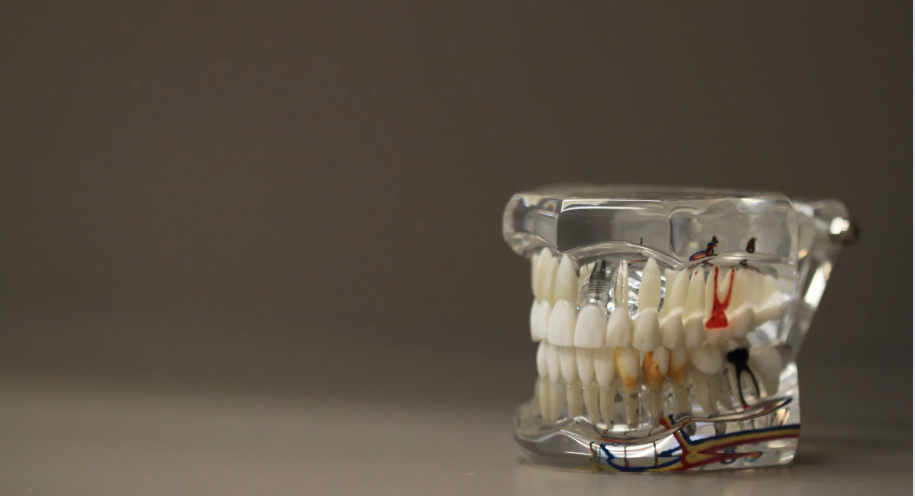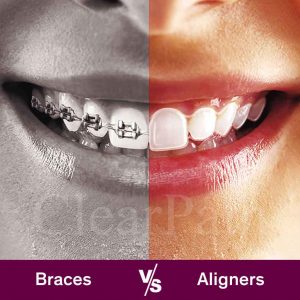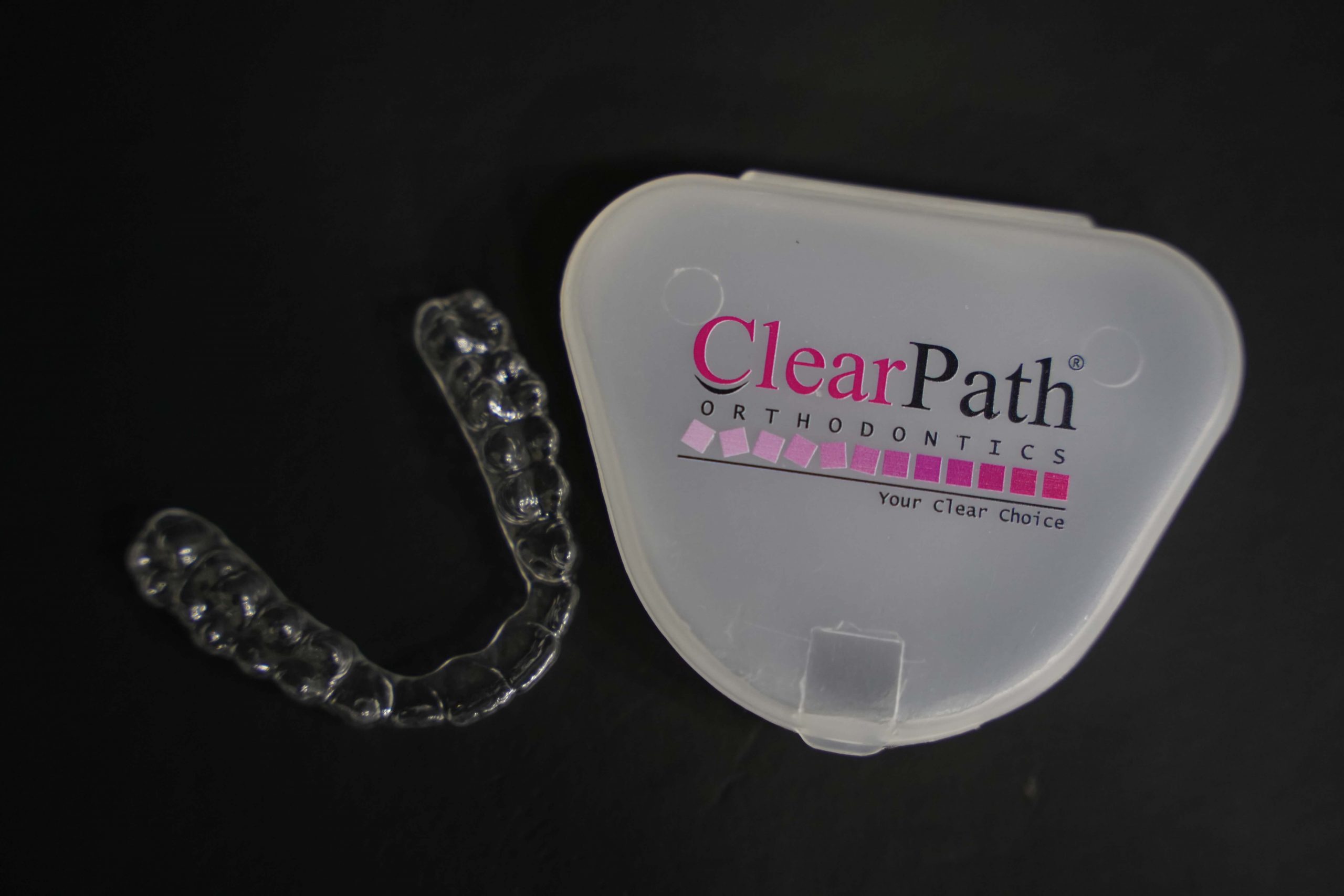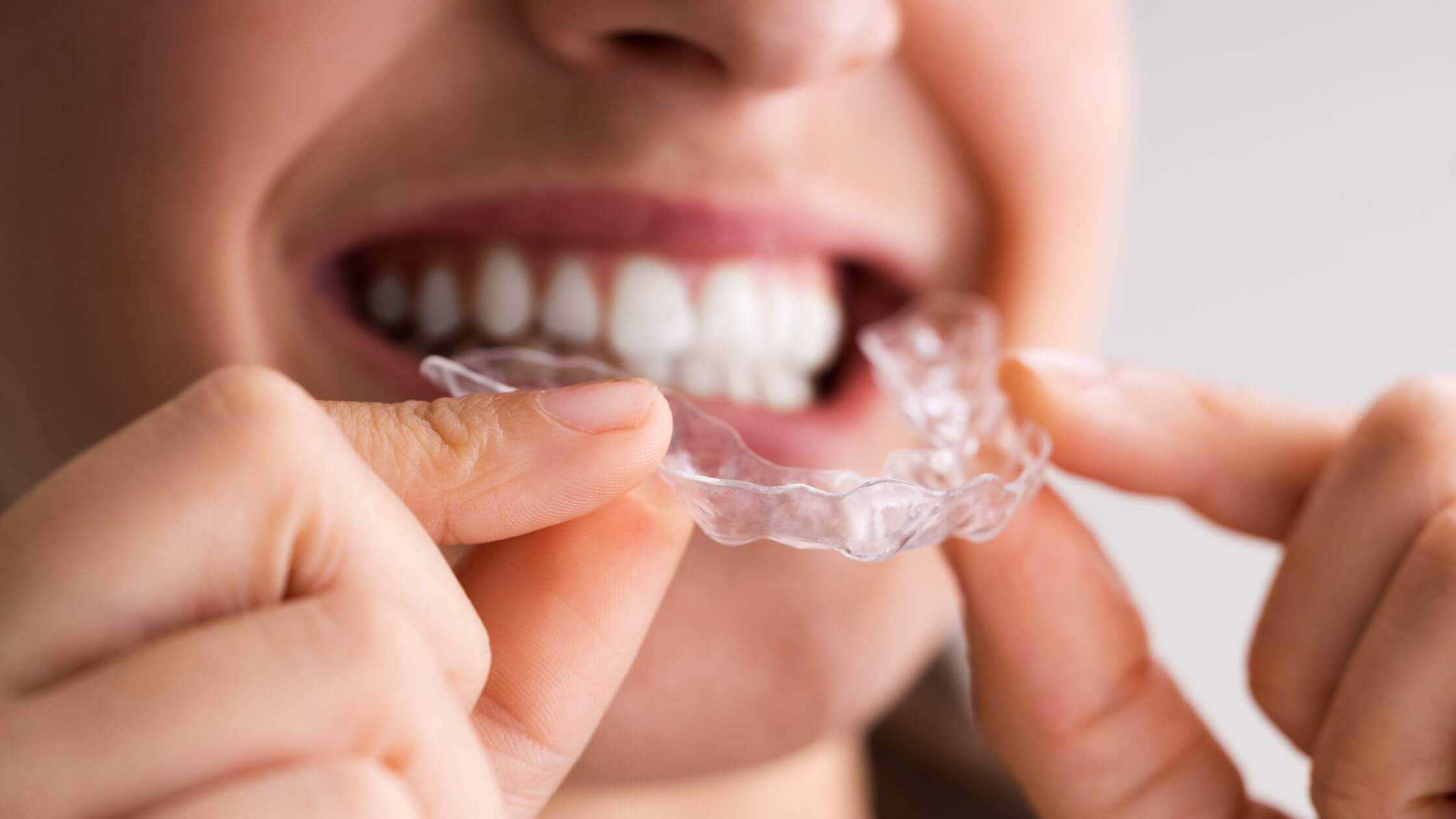Which alternative will be best for them has been a frequently asked question by patients or their parents. Since it is a personal choice, we figured we’d give you some material you may take with you to support you if you need some extra time to think about your options. It’s crucial to keep in mind that most orthodontic issues can be resolved with clear aligners, but not all of them. You must discuss which option might help you achieve the greatest result with your orthodontist at your initial consultation. However, both options are frequently accessible, so you can choose based on your interests and what best fits your lifestyle.
Table of Contents
ToggleDental braces
Your teeth are covered with braces, which can be composed of metal or porcelain. The teeth are then pushed into the proper place with the use of metal wires and elastic bands.
Clear aligner
Plastic aligners are specifically designed to fit your teeth. The teeth are gradually moved toward their final position by each aligner. Various teeth have little composite resin bumps attached to them to help the aligner grip the tooth and move it properly.
We’ll look at the advantages and disadvantages of both clear aligners and braces in this article.
Poor Vs Good Oral Hygiene
Oral hygiene may not be a top priority for all patients. When they remember, they brush their teeth, but they rarely give their professions the time and care they need. They must understand that they need to enhance the frequency and quality of their tooth brushing before getting braces. If not, they can discover after treatment that their teeth have white spots on them. Either the spots are permanent or they require cosmetic treatment to get rid of them or hide them.
All orthodontic patients must develop appropriate dental hygiene practices, although clear aligners will be less forgiving. Patients using Invisalign are less likely to develop the calcium deposits, spots, or significant gum issues that people with braces can get as a result of bad behaviors. Patients with Invisalign, however, are susceptible to tooth decay.
Plaque and bacteria can accumulate between the tray and teeth when using Aligners because it covers the teeth. Saliva does not serve the purpose of “cleaning” the teeth. For the best results, anyone seeking orthodontic treatment should commit to maintaining proper oral hygiene throughout the process.
Visible Vs. Covered Treatment
Clear aligners, often known as Invisalign, are less visible than traditional braces. Only up close can aligners be seen, and they are frequently not visible in photographs.
Removable Vs. Non-Removable
The freedom to remove aligners whenever desired is a consideration in some people’s decision to use them. They prefer not to be concerned about consuming meals that can harm their braces. Patients who are wearing braces typically need to make some dietary adjustments or prepare certain foods to avoid eating anything that is excessively chewy, crunchy, or hard.
Others don’t want to deal with the trouble of bringing the trays in and out each time they want to eat. For the trays to function effectively, they should be worn for at least 22–23 hours daily. The trays should be placed back in their mouths as soon as they are finished eating or brushing. Some patients may be diligent at first, but as the months go by, they start to lose interest, their treatment slows, and the timetable lengthens.
Cases: Simple Vs. Complex
Everybody has a unique set of teeth. As a result, each orthodontic procedure varies significantly. While some patients require extensive attention during their treatments, others are straightforward. Patients with mild to moderate crowding respond well to Aligners, but for more complex situations, the biomechanics of braces are required to rotate, pull teeth into alignment, and correct bites.
Long or Short Treatment Period
Braces can shift teeth into the desired position more quickly than Invisalign if you’re looking to finish treatment as soon as possible. The differences between each set of Invisalign trays, which are changed out every two weeks, must be slight. Large gaps can fill and teeth can be better aligned with braces.
What Option Suits You the Best?
Our Clearpath orthodontist will go over each option with you and explain whether it is good for you or not. It is up to you to choose the option that best fits your lifestyle and level of commitment once you have all the information.











